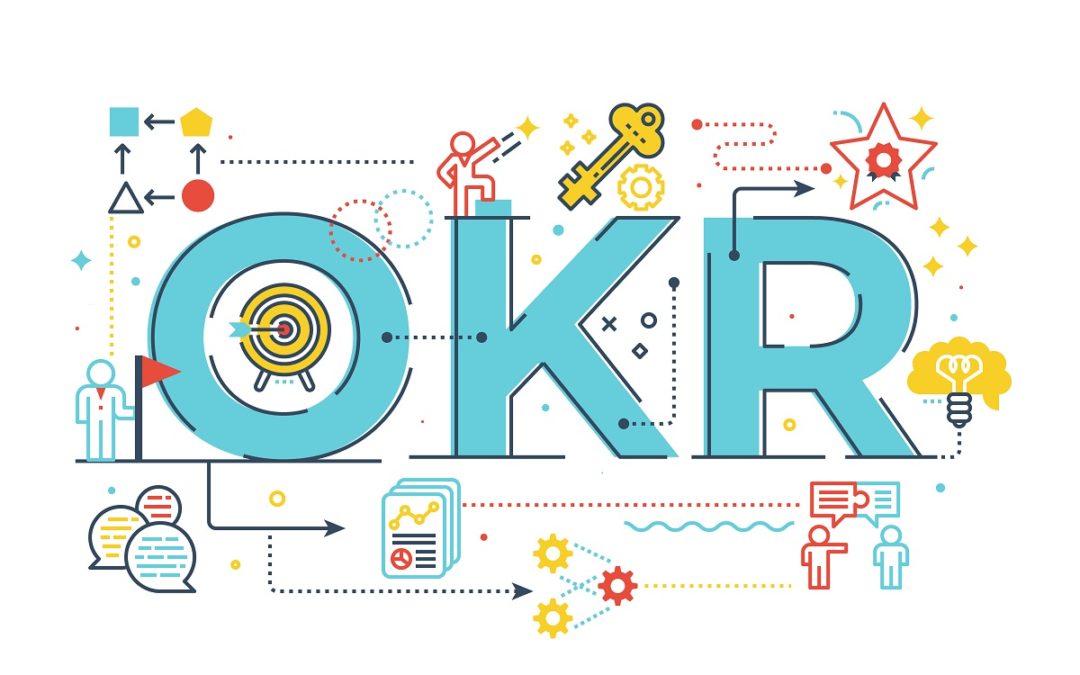Starting position
The client in this case study was a medium-sized company that produces components for the automotive industry. One of the two managing directors learned about OKR during leadership training and was so enthusiastic that he convinced the second managing director to introduce OKR in the company. Since no one in the company had experience with the topic of OKR, it was clear from the beginning that professional, external support was needed for such a project.
Why OKR?
The first – and from my point of view, the most important – question with every OKR introduction is what the company wants to achieve with it – i.e. the question of purpose. In this case, that was quickly clarified. As the automotive industry is currently undergoing radical change, the framework conditions for this company are also changing. Of course, this entails many risks, especially concerning the long-standing existing business, which accounts for about 70 % of the total turnover. At the same time, there are a lot of opportunities – both in the previous core market and in other markets. This also brings us to the answer to the purpose of the OKR introduction: The company wanted to become fit to react quickly and agilely to the changed framework conditions. OKR was given a central role as a strategy implementation tool to continue the company’s growth course even under the changed framework conditions.
Project setup
After we won the contract to accompany this project, the first step was to set up the OKR implementation project with the client. This essentially consisted of three phases:
Phase 1: Management Alignment – Values and Leadership Principles
Phase 2: Training of internal OKR coaches
Phase 3: First OKR cycle
Management Alignment – Values and Leadership Principles
The first phase was only marginally related to OKR. Instead, it was about reflecting on the corporate culture together with the first management level of the company (12 people). This is not an easy task, as it is pretty standard that some managers have a very different understanding of leadership, and everyone is convinced that their way is the best and right one. As a facilitator, one of my tasks was to create an understanding of different ways of thinking and to focus on the common goal. One important finding was that a clear commitment to shared values and leadership principles is needed.
Finally, values and leadership principles could be worked out and finalised after two workshops. It was exciting to observe how the leadership team came out of this phase stronger. Some issues that had been “smouldering” under the surface for a long time could be discussed and clarified. At the same time, a high degree of motivation arose to get started with the actual OKR project based on the newly developed values and leadership principles.
Training of internal OKR coaches
To live OKR, it is essential to build up know-how and competencies within the company. A role is needed that supports and drives the OKR process, is available as a contact point for questions and problems and ensures the framework conditions for a successful project – the OKR coach. Together with the client, we defined a selection process for future internal OKR coaches. The training itself consisted of 2 3-day training sessions.
First OKR cycle
Before the start of the first OKR cycle, the management team developed four annual goals, so-called MOALS, based on the strategy. The OKR cycle itself lasted three months and consisted of the following phases:
– Planning: Development of the OKR sets in the OKR teams.
– Drafting: Alignment of the different OKR sets
– Weekly / Check-Ins: short, weekly status checks
– Review: Substantive assessment of target achievement at the end of the cycle
– Retrospective: Review of the OKR process
The focus of the entire first cycle was to gather experience and learn together how the OKR principles are best applied in the company. In particular, the retrospectives at the end of the cycle played a crucial role. The three most important lessons learned were:
– Self-organisation of the OKR teams must first be “learned”.
– Separating operational business and strategy implementation through OKR is often tricky.
– OKR needs time – it is important that this is also planned and not seen “on top” of the previous 100% workload.
Overall, the feedback after the first cycle was primarily positive. On the other hand, there was also an awareness that it would probably take at least 2 to 3 more cycles to optimally adapt the OKR framework to the company’s needs.


Recent Comments